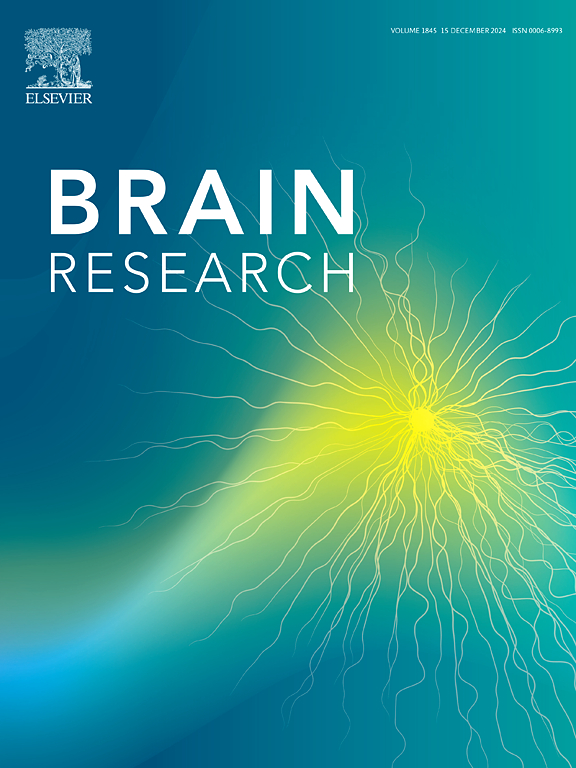40年来对啮齿动物体内调节稳态摄入、享乐摄入和偏好的中枢神经解剖学和神经化学回路的分析
IF 2.7
4区 医学
Q3 NEUROSCIENCES
引用次数: 0
摘要
这篇观点评论是为了回应《脑研究》杂志60周年的庆祝活动而写的,涵盖了我的实验室在啮齿类动物摄食行为的神经生物学基础上40 年来不断发展的工作重点。在我们最初的工作中,我们检查了在自发性、剥夺性、葡萄糖中毒和享乐性条件下,全身和心室给药一般和选择性阿片受体激动剂和拮抗剂对食物摄入的影响。Gavril Pasternak和Pan应先利用影响or -1、DOR-1、KOR-1和ORL-1基因以及g蛋白亚基的反义寡核苷酸敲除技术,研究了受体介导的阿片受体激动剂诱导的摄食以及调控挑战后的摄食。我们的实验室采用脑内显微注射技术,通过使用选择性mu, delta1, delta2和kappa阿片受体亚型激动剂,结合一般和选择性阿片、多巴胺、谷氨酸能和gaba能拮抗剂,在同一部位或相互作用部位施用,绘制了介导稳态和快乐进食反应的边缘伏隔核和腹侧被盖中央脑回路。允许识别分布式大脑网络介导这些摄取效应。我们的实验室与Anthony Sclafani博士密切合作,然后专注于与大鼠糖(蔗糖、葡萄糖和果糖)和脂肪(玉米油)条件风味偏好(CFP)发展相关的药理学、神经解剖学和学习机制,以及小鼠在食物摄入、偏好和食欲过程中的遗传变异。本文章由计算机程序翻译,如有差异,请以英文原文为准。
A 40-year analysis of central neuroanatomical and neurochemical circuits mediating homeostatic intake and hedonic intake and preferences in rodents
This perspective review was written in response to the celebration of the 60th anniversary of the journal, Brain Research, and covers the evolving focus of my laboratory’s work over 40 years in the neurobiological substrates of ingestive behavior in rodents. Following our initial work examining the effects of systemic and ventricular administration of general and selective opioid receptor agonists and antagonists on food intake under spontaneous, deprivation, glucoprivic and hedonic conditions, my laboratory in close collaboration with Drs. Gavril Pasternak and Ying-Xian Pan utilized an antisense oligodoxynucleotide knock-down technique affecting MOR-1, DOR-1, KOR-1 and ORL-1 genes as well as against G-protein subunits to study receptor mediation of opioid receptor agonist-induced feeding as well as feeding following regulatory challenges. Our laboratory employed intracerebral microinjection techniques to map limbic nucleus accumbens and ventral tegmental central brain circuits mediating homeostatic and hedonic feeding responses through the use of selective mu, delta1, delta2 and kappa opioid receptor subtype agonists in combination with general and selective opioid, dopamineric, glutamatergic and GABAergic antagonists administered into the same site or the reciprocal site, allowing for the identification of a distributed brain network mediating these ingestive effects. Our laboratory in close collaboration with Dr. Anthony Sclafani then focused on the pharmacological, neuroanatomical and learning mechanisms related to the development of sugar- (sucrose, glucose and fructose) and fat- (corn oil) conditioned flavor preferences (CFP) in rats, and on murine genetic variance in food intake, preferences and the process of appetition.
求助全文
通过发布文献求助,成功后即可免费获取论文全文。
去求助
来源期刊

Brain Research
医学-神经科学
CiteScore
5.90
自引率
3.40%
发文量
268
审稿时长
47 days
期刊介绍:
An international multidisciplinary journal devoted to fundamental research in the brain sciences.
Brain Research publishes papers reporting interdisciplinary investigations of nervous system structure and function that are of general interest to the international community of neuroscientists. As is evident from the journals name, its scope is broad, ranging from cellular and molecular studies through systems neuroscience, cognition and disease. Invited reviews are also published; suggestions for and inquiries about potential reviews are welcomed.
With the appearance of the final issue of the 2011 subscription, Vol. 67/1-2 (24 June 2011), Brain Research Reviews has ceased publication as a distinct journal separate from Brain Research. Review articles accepted for Brain Research are now published in that journal.
 求助内容:
求助内容: 应助结果提醒方式:
应助结果提醒方式:


